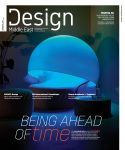AVEVA’s Andrew McCloskey on how Digital Twin is reimaging the construction industry
Digital Twin Technology is increasingly being deployed by organisations in the construction industry as part of their digital transformation journey. In this article, Andrew McCloskey, AVEVA’s CTO and EVP R&D discusses the benefits that this technology can bring in terms of delivering organisational cost savings and operational efficiencies.
Worldwide, construction is already one of the largest industry sectors. According to PwC, Global Construction 2030 forecast, the volume of construction output will grow by 85% to $15.5 trillion worldwide by 2030, with three countries, China, US and India, leading the way and accounting for 57% of all global growth. However, the sector is still dealing with four on-going challenges: (1) poor productivity and profitability; (2) project performance – primarily timing and budget issues, (3) skilled labor shortages; and (4) sustainability concerns.
An answer? Digital Twin technology. Digital Twins provide the ability to create a virtual replica of potential and actual physical assets, processes, people, places, systems and devices that can be used for various purposes.
Companies use Digital Twins for many reasons including testing new assets or procedures before launching them in the real world where it becomes more expensive and complicated to fix any issues, the improvement of ongoing operations or training employees.
In practical terms, this type of technology can help improve the safety on an oil rig, improve the efficiency of a production plant, or ensuring buildings meet sustainability, efficiency or regulatory requirements. Additionally, and perhaps more importantly, a Digital Twin can help predict potential failures before they happen and suggest ways to prevent those failures.
Untapped opportunity and gains
The concept of Digital Twins is becoming relevant to an increasing number of industries and possible use cases. This is a result of the growth of digital transformation. Consequently, buildings and cities are becoming smarter – all fuelled by data and application of that data. Gartner estimates that by 2021 there will be over 25 billion Internet of Things (IoT) endpoints and Digital Twins will exist for potentially billions of scenarios. Benefits will include asset optimization, competitive differentiation and improved user experience.
Digital Twinning is fast becoming essential to IoT deployment as many more IoT platform providers and analytics companies are investing in Digital Twin technology. These cover functions from initial ideas, through to design, development and construction.
Construction design and developers are often forced to limit their creativity because if a new building design or concept is created, it must be approved to match the necessary safety requirements. Timescales may also prohibit developers from being too experimental with ideas. However, developers can test out their ideas rapidly through digital simulation that involves all the necessary real-world factors such as scale, gravity and weather for example, the total timeframe during which they could share their ideas and get them approved would be cut 100x.
Furthermore, the safety, practicality, and sustainability of the new building designs can now be tested in a simulation and the feedback will be just as accurate as it would be if the test was executed in real life because the simulation directly derives data from the world. There are gains to be made, for example, energy represents approximately 19% of the total expenditures for a typical building, so proactive, data-driven energy management can make a big impact on the bottom line and the environment – a digital twin helps makes this possible.
Augmented operations and maintenance
When assets are deployed or construction is commissioned, a Digital Twin can be continually updated with ongoing operational and process data such as maintenance and performance records, and) Industrial Internet of Things (IIoT) sensor information. During the operational stages, variations from optimal process and asset design are captured during run-time, and the Digital Twin is automatically updated with this information.
Knowing the current state of an asset, the digital model can use predictive learning technology to proactively identify potential asset failures before they occur and even suggest ways to prevent those failures. In other words, the Digital Twin can predict when its physical counterpart will break, well before that happens.
The Digital Twin can also utilise artificial intelligence with advanced process control, control strategy design and process optimization. These tools incorporate necessary variations from process and asset design into the engineering asset or plant data, enabling a complete and efficient digital value loop and unified lifecycle management. As organisations scale-up to a Digital Twin of the enterprise operating model, inefficiencies and opportunities in their ongoing operations can be identified and executed upon in real-time.
Developing an effective Digital Twin strategy
Digital Transformation merges the latest innovative tools and processes with organizational in-house domain expertise. This enables not only the contextualization of new and existing data but also delivers actionable insights and information. Enterprises can then execute upon these new insights and close the loop towards continuous process improvement. For this to occur, every Digital Transformation journey needs to begin with the critical understanding that information and data have become a priceless and strategic asset to the enterprise.
To establish an effective Digital Twin strategy, each asset requires a different set of asset data services, together with engineering master data, effective visualization tools, plus collaboration and workflow procedures:
- Create a Digital Twin model that uses accurate data feeds to help understand product or operations performance and adjust critical control points to deliver short- and long-term value.
- Identify where Digital Twin simulations and predictive maintenance can deliver the best value, for example, improvements in operations or processes, reduction in costs or risks.
- Build a Digital Twin architectural roadmap that enables program and project planning for digital transformation.
- Data insight is king. Use a Digital Twin for deployments or projects as this will expose how the organization or project connects with its current state and how it is likely to respond to internal or external changes.
A Digital Twin incorporates data from these diverse data points, and creates a myriad of potential benefits, including the ability to test changes to processes before they are implemented, making better and accurate decisions based on data. Construction companies that succeed in realizing the potential savings from effective intelligent master data management will reap the transformative benefits of Digital Twin technology and have a lot to gain through unlocking the boundaries of creativity without the burden of risk.






















 Kuwaiti developer URC signs with Ahmadiah Contracting for the Commercial District development at Hessah AlMubarak
Kuwaiti developer URC signs with Ahmadiah Contracting for the Commercial District development at Hessah AlMubarak